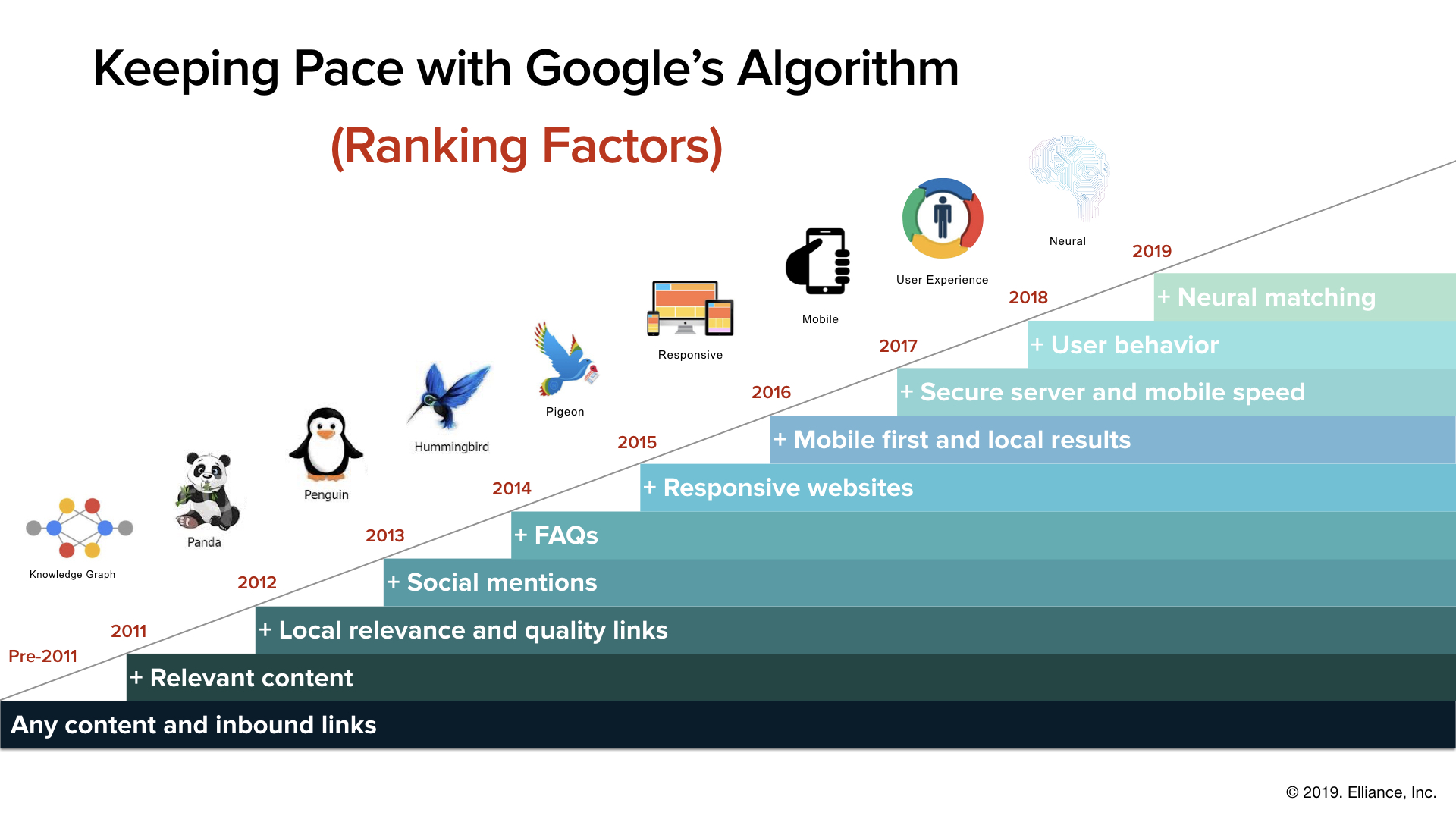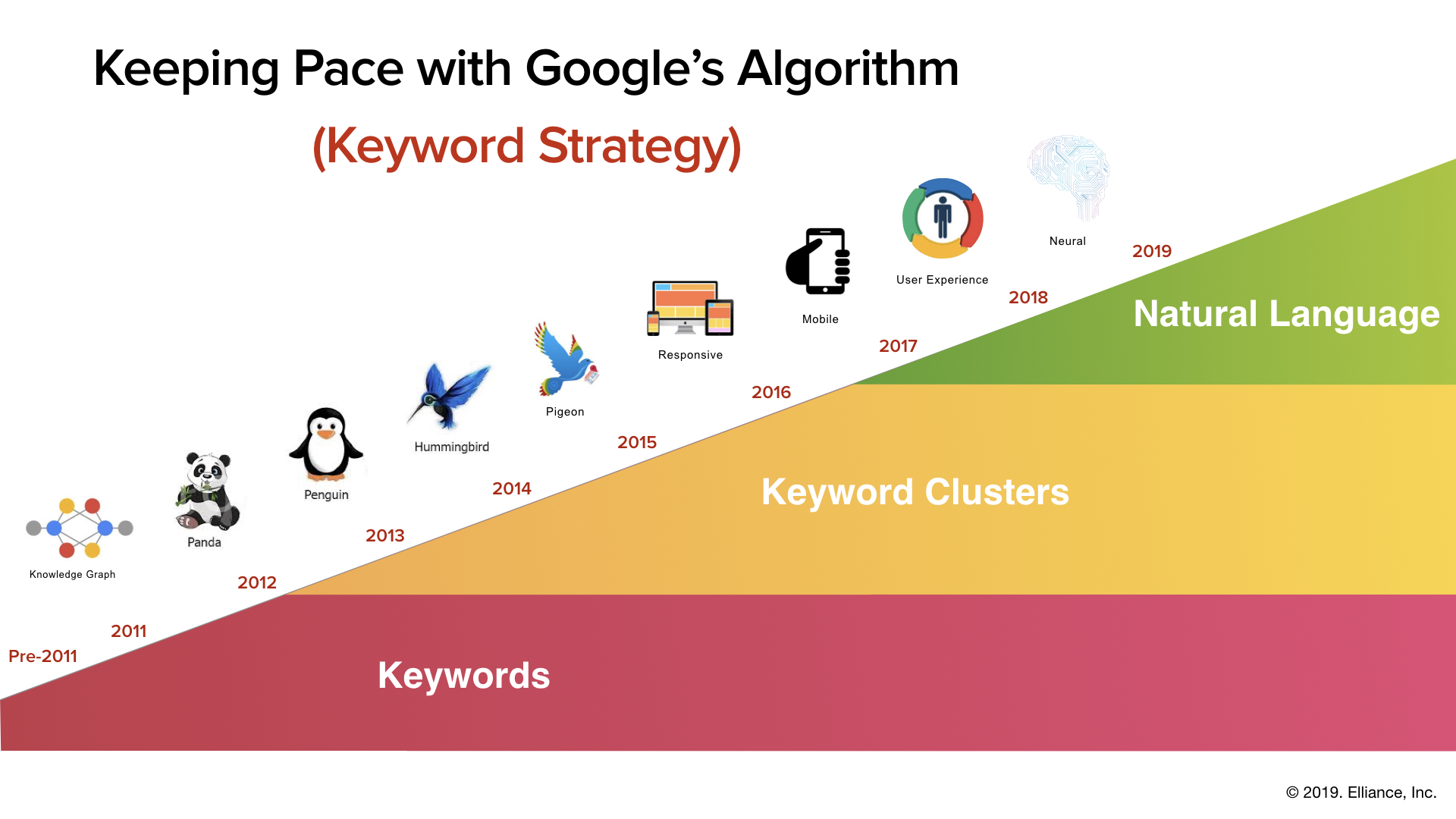| May 19, 2019
Keeping Pace with Google’s Algorithm

Achieving Google page 1 rankings is the road to prosperity for brands. Since 90% of the users never go beyond page 1 of Google search results, and Google now commands close to 90% of global searches, getting on page 1 is critical for brands. These Google page 1 rankings are also a critical foundation for the emerging voice search arena.
I’ll first provide a little background on how Google’s algorithm works. Then I’ll share some tips on how to get ready for voice search on mobile devices and home gadgets like Amazon Echo, Google Home, and Apple HomePod.
Factors That Influence Page 1 Google Rankings
Getting on page 1 is not a one and done game. Because Google’s algorithm changes periodically, the strategies for securing page 1 positions must be adapted periodically.
In general, Google wants marketers to provide concise, helpful and useful information to all prospects so they can evaluate their options and make their choices. It doesn’t want marketers to game the bot or game the prospect. Google rewards websites when it finds consistency between the marketer’s website content, its social media conversations, and broader social discussions around the brand. It gives a higher rank to websites that provide assistance that reduce its bot work load, follow standards and adhere to best practices.
To give you a sense of the big changes in Google’s algorithm and the ranking factors in the last decade, I have created a simplified chart below:

Keyword Strategies
The search terms people type in the Google search box have changed dramatically too, and can be understood in three distinct epochs:
The Keywords Era: In the beginning, people used to type in keywords (2-3 words on the average), when looking for products, services and information. The early Google index was initially organized around keywords. SEO marketers gamed the system by increasing keyword density on their website pages. They did this by packing keywords in the page content and in the invisible meta-data fields. This was the “Keyword” era of Google.
The Keyword Cluster Era: When Google added the auto-complete and auto-suggest features to the search box, it changed everything. Keywords turned into key phrases which were 5-7 words long. Instead of keywords, SEO marketers now had to optimize their content around a set of keyword-informed phrases. A set of long-tail phrases began outperforming the top-performing short keywords of the previous era. This was the “Keyword Cluster” era of Google.
The Natural Language Era: The search game is changing yet again. We are now entering a new era of search with the advent of voice activated search on mobile phones (like Google Assistant, Siri, Microsoft Cortana and Amazon Alexa) and gadgets like Amazon Echo, Google Home, Apple HomePod and others. This is ushering in a completely new paradigm of search based on “Natural Language Processing”. People will utter sentences containing approximately 8-12 words to get answers to their questions. By year 2020, 30% of searches are expected to be voice driven.
Getting Ready for Voice Search
Marketers will have to do six things to show up more frequently on voice searches:
1. Get responsive. Speed it up. If your website isn’t responsive yet (i.e. auto-adjusts gracefully to mobile devices, tablets and desktops), it’s time to build one now. And make sure it’s fast, fully SEO optimized and running in secure mode.
2. Write colloquially. People won’t change their speaking habits for the computer. Computers will have to adapt to human beings speaking a less than perfect language – at the proverbial ninth grade level.
3. Write page summaries. Start thinking about writing short, persuasive, 29-word page summaries above the screen fold on long-form pages. These summaries will act as pop-up snippets served up by voice searches on mobile devices and home gadgets; they will also appear as answer boxes on desktop search results.
4. Build social shares. The more shared the page is on Facebook, twitter, LinkedIn and other social channels, the more likely it will surface on voice search.
5. Think globally. Act locally. Since more than 20% of searches are local, consider adding phrases such as ‘near me’ into your copy, especially if you have a local or regional business.
6. Rank high on desktop/mobile search. If your website is not ranked on desktop/mobile search, it is unlikely that it will be ranked on voice search. Before investing in voice search, focus your marketing efforts on achieving top rankings on desktop/mobile search.
Learn more about our search marketing services.

